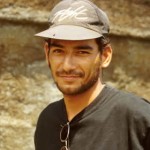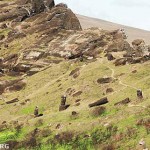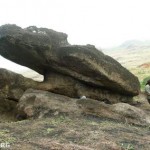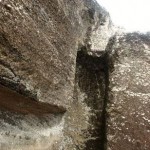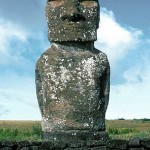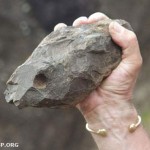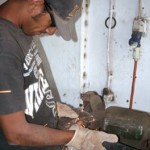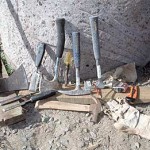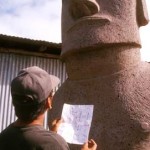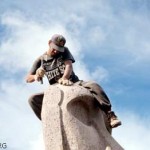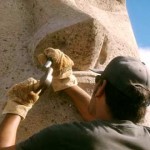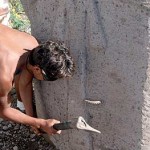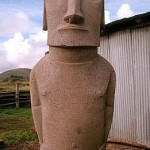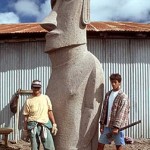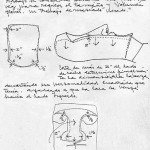Ahu Tongariki: Moai 14-548-009
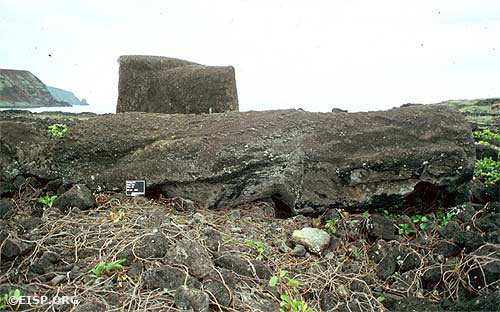
Prone Moai 14-548-009 on the unrestored site of Ahu Tongariki. The ahu was destroyed by a tsunami in 1960. © 1984 EISP/JVT/Photo: D.C. Ochsner.

Drawing of prone Moai RR-548-009 showing incised 'tattoo' lines on the neck. © 1992 EISP/JVT/Drawing: C. Arèvalo Pakarati.
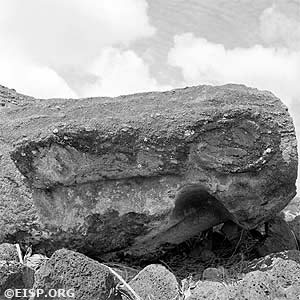
Detail of the broken right ear on Moai 14-548-009 at Ahu Tongariki © 1984 EISP/JVT/Photos: D. C. Ochsner.
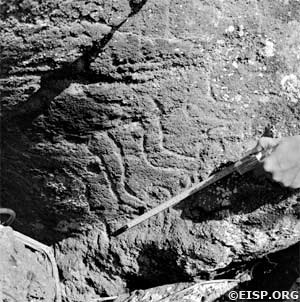
Incised lines on the neck of prone Moai 14-548-009 at Ahu Tongariki © 1984 EISP/JVT/Photos: D. C. Ochsner.
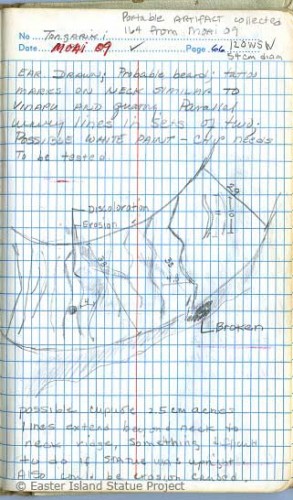
Pages from Jo Anne Van Tilburg's field book detailing attributes of the right ear (left) and incised 'tattoo' on prone Moai 14-548-009. © 1984 EISP/Notes: J. Van Tilburg.
The Rapanui carver’s perspective: Notes and observations on the experimental replication of monolithic sculpture (moai)
This is an abbreviated version of a paper originally published in Pacific Art: Persistence, Change and Meaning (Herle et al. eds. Adelaide: Crawford House, 2002 for citations and notes).
Real Time and Individual Energy
Experimental archaeology is the systematic approach used to test, evaluate and explicate method, technique, assumption, hypothesis and theory at all levels of archaeological research. This paper employs a replicated moai to describe relationships between real time and individual energy, and explores the subjective artistic dimension of moai carving during an experiment lasting 32 8-hour days. It is drawn from journal notes taken by Van Tilburg from October 1997 to May 1998, by Arévalo from December 1988 to July 1999, and on written correspondence in English and Spanish between the authors.
Carvers and Craving
On Easter Island (Rapa Nui) ethnographic data related to monolithic stone carving methods, production techniques and carvers are scant. In the 1800s some Rapanui persons were distinguished by their relationships to ancestors who had been famed stone carvers. Katherine Routledge, co-leader of the Mana Expedition to Easter Island, 1913-1915, collected some names of statues that were said, in actuality, to be names of carvers, and believed them to have veracity.
[Read More…]
Bas-relief Dorsal Designs
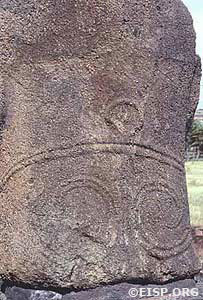
Bas-relief dorsal design on the back of an upright statue, Ahu Nau Nau, Anakena, Easter Island (Rapa Nui). DCO/JVT
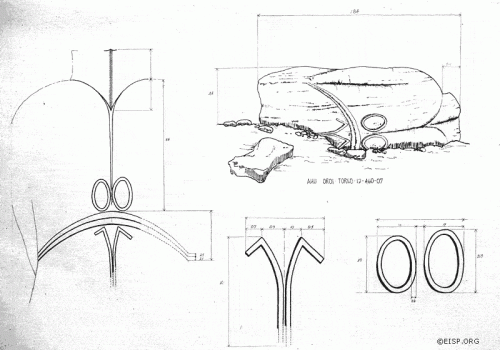
Detail of a similar but more complex design on the back of a fallen and broken torso, Ahu Oroi, Rapa Nui (Easter Island), 1983. Drawn by Raúl Paoa, EISP.
Rano Raraku Exterior Quarry: Moai sketches and neck tracings (RR-002-077)
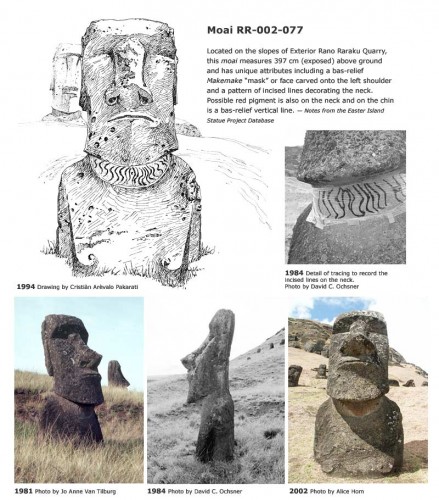
Moai RR-002-077 Located on the slopes of Exterior Rano Raraku Quarry, this moai measures 397 cm (exposed) above ground and has unique attributes including a bas-relief makemake ‘mask’ or face carved onto the left shoulder and a pattern of incised lines decorating the neck. Possible red pigment is also on the neck and on the chin is a bas-relief vertical line. — Notes from the Easter Island Statue Project Database
 English
English  Español
Español 